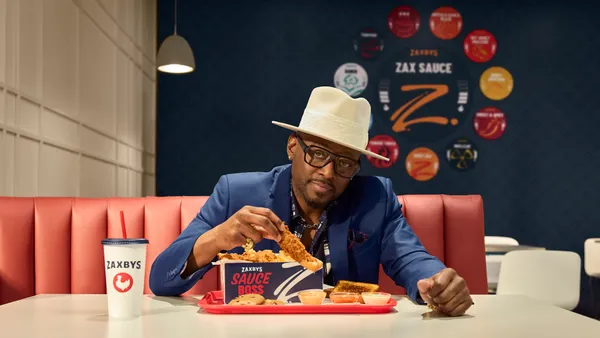Launched in 2017, Brandless captured the attention of the marketing world with a radical business proposition: What if a direct-to-consumer (DTC) upstart could undercut established packaged goods giants on price and convenience, while largely eschewing the immense resources those legacy players sunk into branding, advertising and retail shelf conquest?
This week, the would-be disruptor backed by SoftBank's Vision Fund turned heads for a different reason: It announced it was going out of business following months of logistical issues and leadership changes. Brandless' downfall is predominantly a story of failing to achieve ambitious growth targets quickly in an already low-margin business. But for marketers, the company's trajectory also speaks to the importance of brand building, and how differentiating a brand is growing more difficult in the crowded digital era.
"As retailers are grappling with digital transformation, I think some of these DTC failures highlight the challenges of building your own private label brands," Hilding Anderson, Publicis Sapient's head of retail strategy, North America, told Marketing Dive.
"To me, it highlights the importance of having a strong brand, and the value of those brands that have been built over the last 50 years," he added about Brandless' closing. "[Brandless] was almost trying to do a double-step there, which was to introduce a new direct, digitally led brand and to do so with a relatively novel marketing technique of low touch and low information."
DTC takes a hit
The shuttering of Brandless marks one of the more significant casualties to impact the DTC category, though hardly the sole bump in the road. Casper, which helped popularize the bed-in-a-box model, had a rocky debut on the public markets, receiving a drubbing to its stock value this week. And subscription razor service Harry's saw a deal to be acquired by Schick marketer Edgewell fall apart following FTC scrutiny.
Taken together, these developments underpin how some of the shine is starting to wear off the DTC space that's proved increasingly disruptive — and appealing from an acquisitive standpoint — to old guard players like Unilever and Procter & Gamble, but that is now experiencing its own growing pains and greater scrutiny.
"It is getting a lot more competitive," Laura O'Shaughnessy, CEO of SocialCode, told Marketing Dive. "The public market thrashed some of these IPOs because of the business fundamentals, so now the private market is, too."
At launch, Brandless bet it could contend with the Walmarts and Krogers of the world — not to mention Amazon — by offering all products at $3. Those prices eventually hiked, and the clarity of what, exactly, Brandless had to offer muddied. Brandless' bold positioning as being "brandless" further weakened its capability to break out, even as it was, in its own way, a type of distinctive branding.
"They bit off so much before they had that fundamental customer connection and before they figured out if the unit economics of what they were offering worked," O'Shaughnessy said.
"If you were to start Brandless today, you would have to start with a narrow vertical ... instead of a whole shelf," she added. "Then, scale from there."
Pricey and complex
Time will tell if Brandless shuttering will be followed by broader DTC consolidation. What's clear is that a surfeit of newer, samey DTC entrants have upset the balance for a crop of maturing disruptors, and many beyond Brandless aren't equipped to have their business models and brands stand out in that new landscape.
"A lot of the DTC that has come out over the last five years, and a lot of the follow-on players, have literally no product differentiation, no unique selling proposition and are making the assumption that they can just have a beautiful website and cool marketing and that that would drive success," David Rodnitzky, CEO and founder of 3Q Digital, a firm that worked with Brandless on areas like creative and media planning in its early days, told Marketing Dive.
DTCs aren't alone in potentially needing to recenter on brand building. The strategy has become a common thread among legacy marketers chasing fickle younger consumer groups and a return to growth.
In the wake of Brandless or the implosion of WeWork's IPO, a narrative is also emerging around how profitability needs to again take center stage for upstarts — but marketing shouldn't get lost in that shuffle.
"The DTCs showing sustained success are the ones building a brand, not just a product. Even if they're not making money yet, they have a vision for how they will evolve beyond their initial product offering to drive growth in the future," Matt Rednor, founder and CEO of Decoded Advertising, said over email. "If you're only focused on your one product, eventually you'll tap out all the low hanging fruit and plateau with nowhere to turn to other than hoping retail (the thing supposedly being disrupted) will save you."
If marketing around differentiation is more important than ever for DTCs, it's also pricier and more complex — something that old guard advertisers might need to consider as they attempt to reinvigorate themselves and seek appealing new ventures to acquire or scale.
"A lot of the marketing channels that these [DTC] companies have used for acquisition have gotten more expensive. In particular, that would include Facebook and Google," Rodnitzky said.
"Once they scale to a certain point online and they have to start to come up with other marketing strategies, which typically involve traditional media and branding," Rodnitzky added. "[Those] are harder to measure and oftentimes are not ROI positive in the near term."























